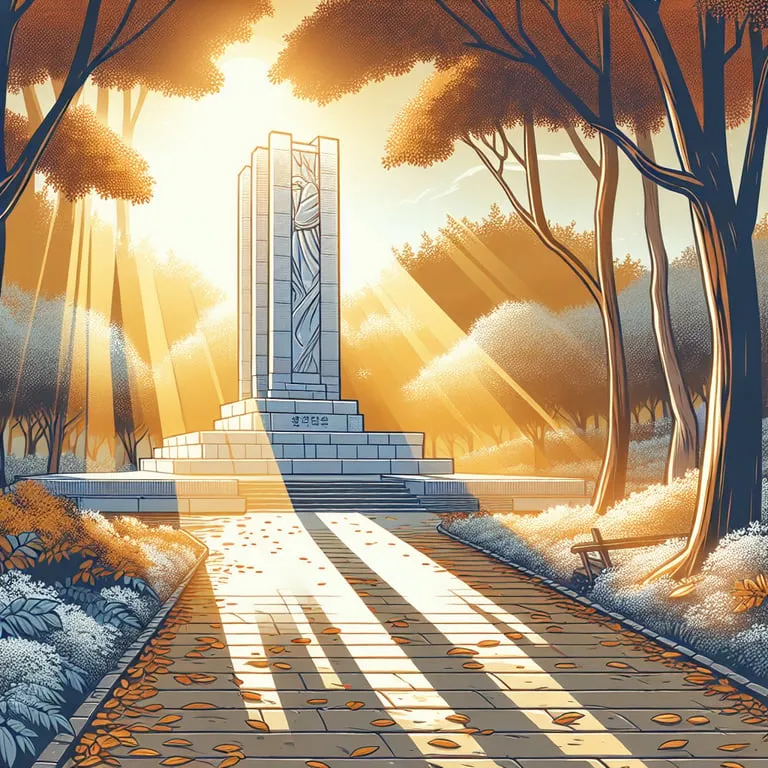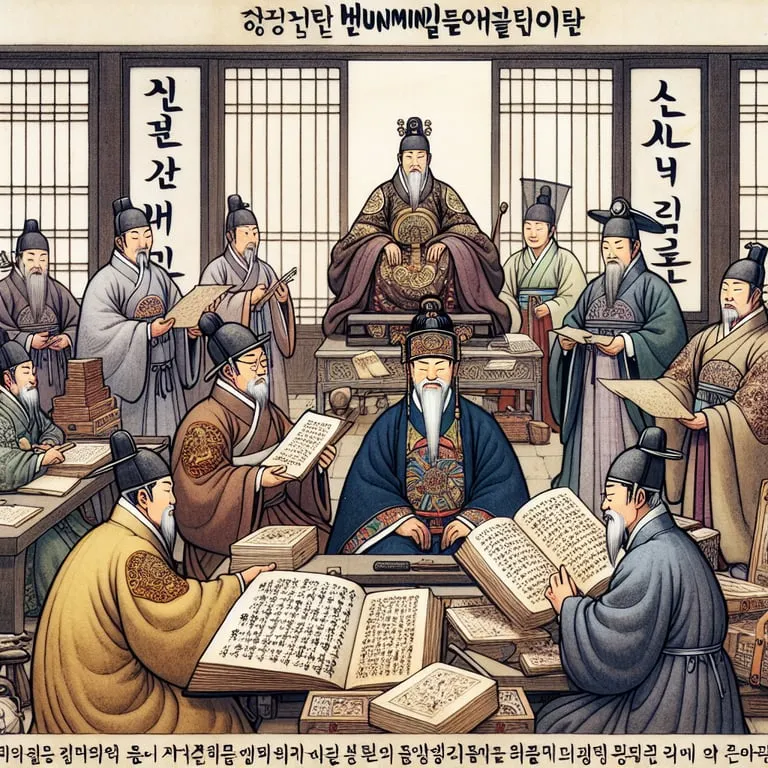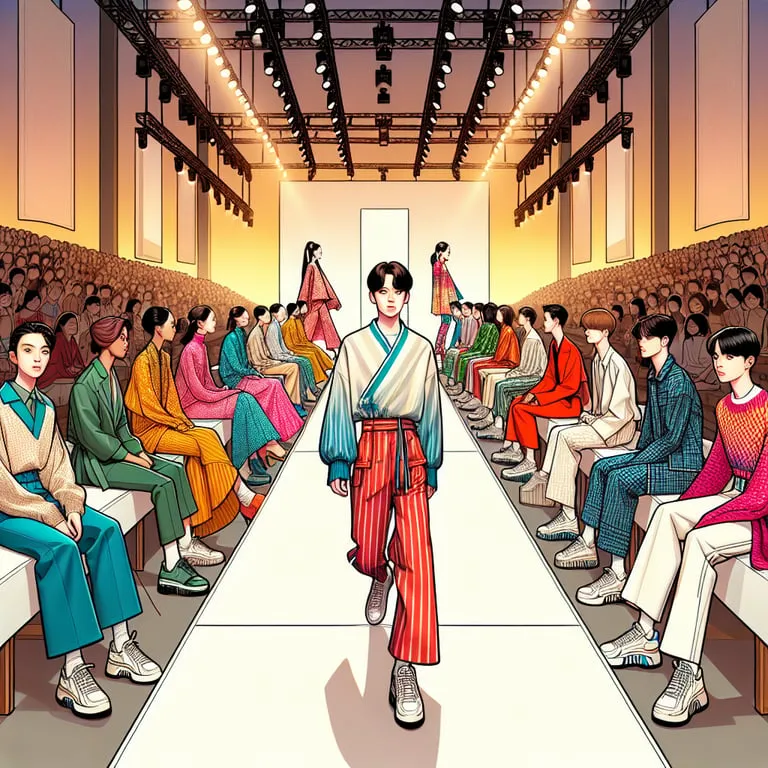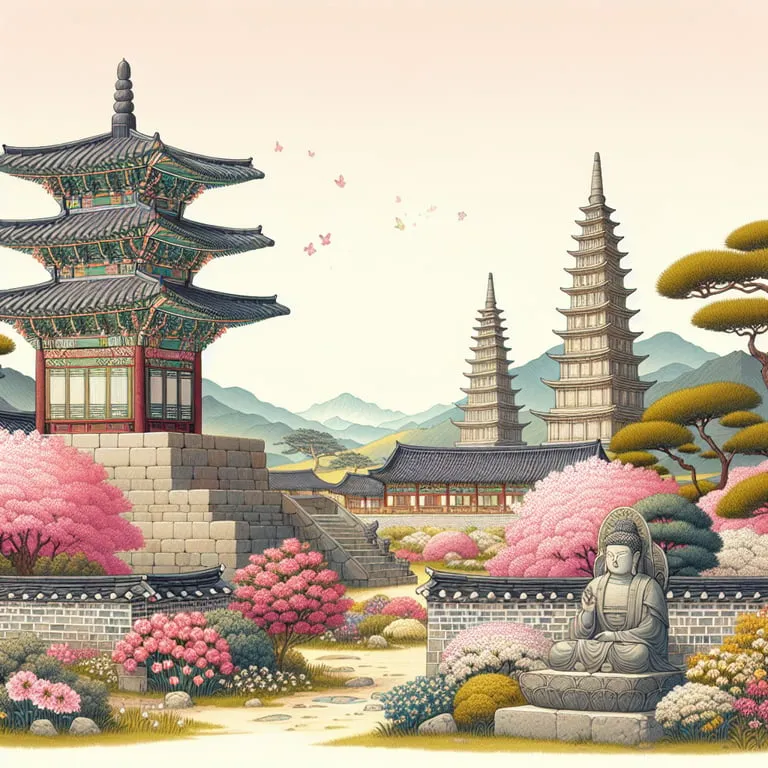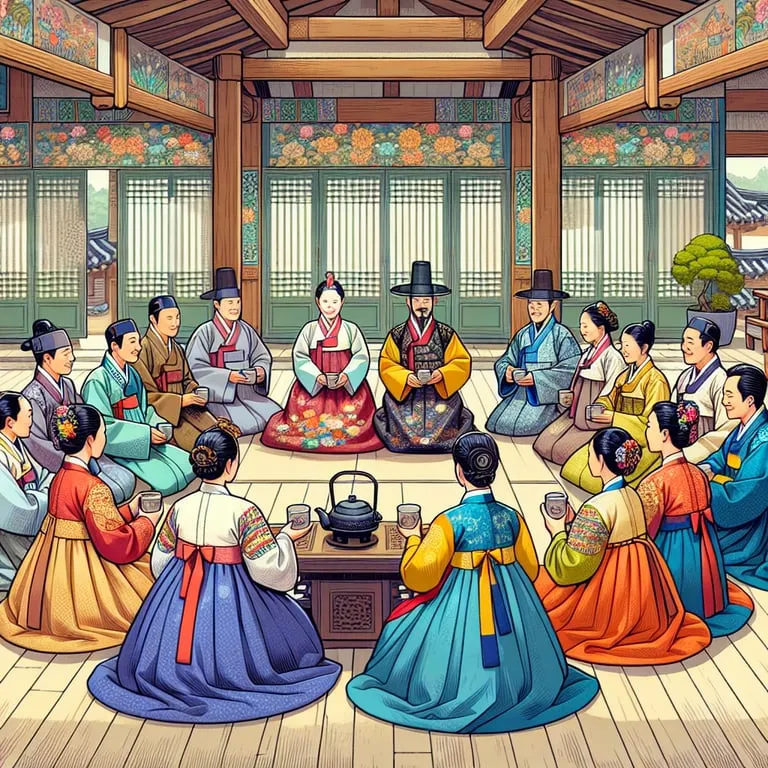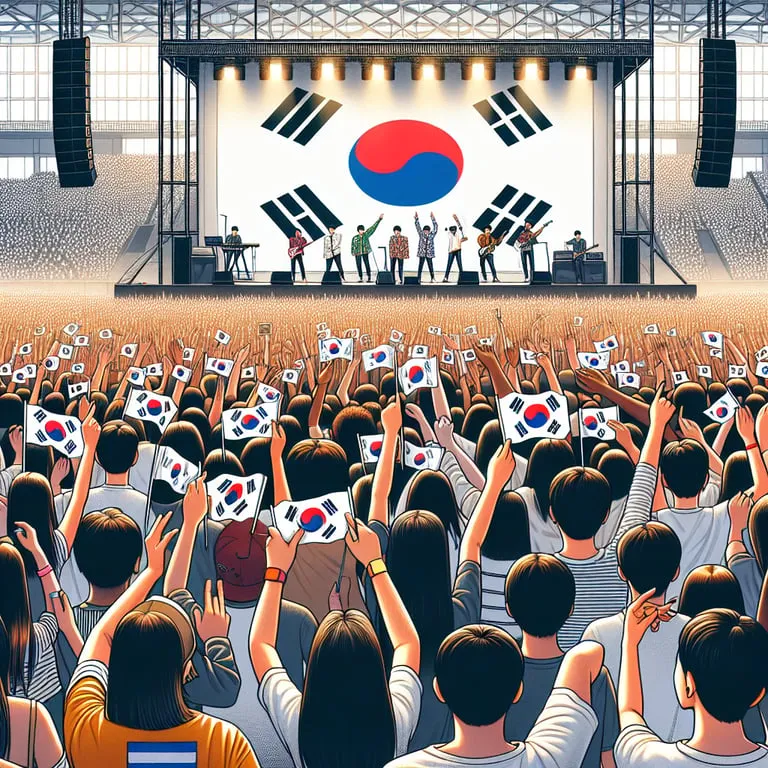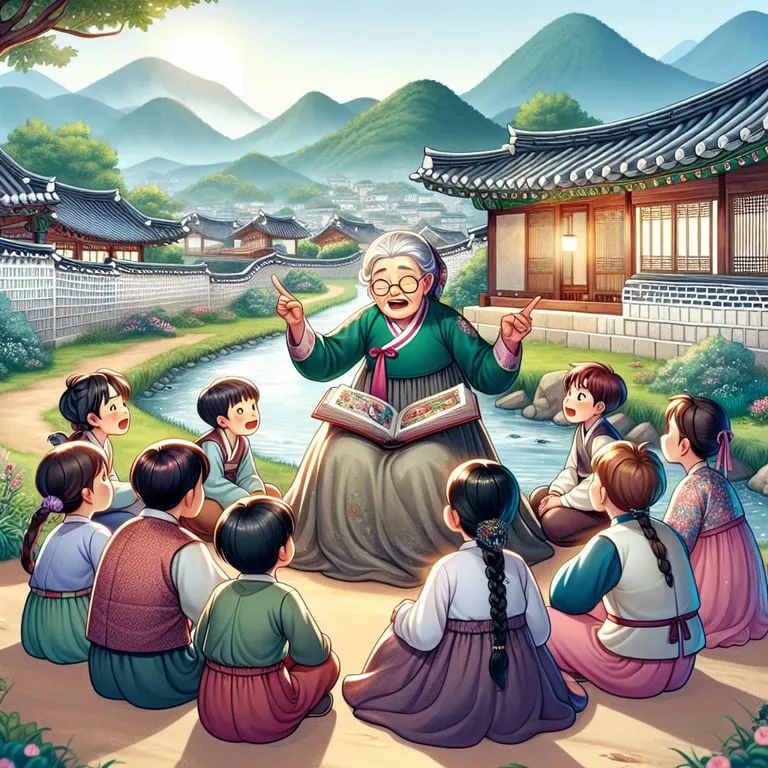Kimchi, often seen as the heart of Korean cuisine, encompasses a rich tapestry of flavors, traditions, and history. Revered not only as a staple food item, its cultural and historical roots run deep in Korean society. With countless varieties influenced by regional differences, kimchi showcases the diversity within Korean culinary practices. Its significance extends beyond the dining table, embodying centuries-old traditions and social rites. Moreover, kimchi is celebrated for its numerous health benefits, offering both nutritional value and culinary versatility. Through this lens, we explore the profound impact kimchi has on Korean cuisine and culture.

History and Origins of Kimchi
The rich history and origins of kimchi are deeply entwined with the agricultural and cultural evolution of Korea. Kimchi, the quintessential Korean side dish, has been a staple food item for centuries — its roots trace back to thousands of years ago, with the earliest records dating back to the Gojoseon era, around 7,000 BC. Initially, kimchi consisted mainly of salted vegetables, but it later evolved into the complex culinary delight we recognize today.
Evolution of Kimchi
The evolution of kimchi reflects Korea’s climatic and agricultural conditions. During the Three Kingdoms Period (57 BC – 668 AD), fermented foods became more prevalent, aiding in the preservation of vegetables through the harsh Korean winters. This preservation technique, known as “fermentation,” involves a method that allows microorganisms to convert organic materials into simpler substances. Such processes would enhance the nutritional value and digestibility of the food, in addition to enriching its flavor profile.
It wasn’t until the Joseon Dynasty (1392–1897) that red chili pepper, Capsicum annuum, was introduced to Korea from the Americas via Japan in the 16th century. This introduction transformed the flavor and appearance of kimchi, elevating it into the spicy delight commonly consumed today. Prior to the addition of chili peppers, kimchi was predominantly white, a far cry from the vibrantly red kimchi varieties we see now! Indeed, the fiery red hue of today’s kimchi is a testament to Korea’s openness to integrating foreign elements into its traditional cuisine, exemplifying adaptability while retaining core cultural values.
Regional Variations
Throughout Korea’s history, the form of kimchi has evolved to include a plethora of regional varieties, each incorporating local ingredients and methods. For instance, in northern parts of Korea such as Pyongan and Hamgyeong, kimchi varieties tend to use less chili and more seasoning with fish sauce to better suit the colder temperatures. Meanwhile, southern regions favor the use of chili, anchovy paste, and fermented shrimp to create a stronger flavor, showcasing the local palate’s predilections.
Historical Significance
Additionally, historical texts like the “Samguk Sagi” and “Goryeo Dogyeong,” the latter written in the 12th century, describe variations of vegetable pickling that predate modern versions of kimchi. These records illustrate the long-standing tradition and continued importance of fermented foods within Korean gastronomy, dating back over a millennium. Further, the 19th-century text “Gyuhap Chongseo,” an encyclopedia on household management, provides detailed kimchi recipes, emphasizing the necessity of precision and care during the fermentation process. Such meticulous documentation highlights the sophistication and cultural significance attributed to kimchi throughout Korean history.
Kimchi on the International Stage
By the 1960s, as a pivotal moment in Korea’s global culinary influence, kimchi began appearing on the international stage, symbolizing Korean identity and tradition. With South Korea’s modernization and widespread diaspora, kimchi became a part of the global palate, celebrated not just for its complex flavors but also its health benefits, attributed to its probiotic richness and nutrient density.
In summary, the journey of kimchi from simple salted vegetables to diverse, vibrant formulations encapsulates a historical narrative of resilience and adaptation. As globalization continues, kimchi stands as a dynamic symbol of Korea’s culinary heritage, marrying ancient techniques with modern taste preferences. This historical tapestry illustrates not only the art of preservation but also an enduring cultural legacy that embodies the heart and soul of Korean society.
Varieties and Regional Differences
In the realm of Korean gastronomy, kimchi stands as an iconic cornerstone, rich with diversity and regional nuances that reflect the country’s geographical and cultural tapestry. The varieties of kimchi are as extensive as they are delicious, encompassing over 200 known types! While that figure constantly evolves as chefs innovate and experiment, let’s delve into the core classifications and regional distinctions that have been cherished for centuries.
Popular Varieties
The most recognized variety, Baechu-kimchi, made from Napa cabbage, is a staple across the nation and serves as a foundational reference point for many. But there’s more than just Baechu. Another popular type, Kkakdugi, crafted from cubed radish, is lauded for its crunch and juicy tang. Meanwhile, the delicate Dongchimi, a radish water kimchi, offers a refreshingly mild flavor – a perfect counterbalance to spicier dishes.
Regional Differences
Regional differences play a pivotal role in defining the character and taste profile of kimchi. In the cold, mountainous province of Gangwon-do, kimchi tends to be less salty and spicy. This adjustment ensures that the kimchi remains palatable over long periods, crucial for survival in harsh winters. On the other hand, Jeolla-do, renowned for its fertility and rich agricultural produce, showcases kimchi that bursts with flavor, utilizing an abundance of seafood-based ingredients like shrimp sauce and anchovy paste.
The southern province of Jeju-do, blessed with a warm climate and proximity to the ocean, introduces a unique twist with its Jeju-style water kimchi. The island’s version often incorporates seafood, such as mackerel, taking full advantage of its maritime bounty. This is a testament to how local ingredients profoundly influence the flavor and preparation style of kimchi.
Unique Regional Variations
Perhaps one of the more intriguing regional variations is the “Bossam-kimchi” from the Gyeongsang region. This elaborate preparation involves wrapping various ingredients like chestnuts, jujubes, and pine nuts in large cabbage leaves, a dish traditionally reserved for festive occasions or significant holidays due to its labor-intensive nature.
Cabbage and radish might be the predominant ingredients, but the regional interpretation of what goes into kimchi – from the type of red pepper powder, the balance of sweeteners, and the choice of salt, to the incorporation of unique local ingredients like mustard greens or bamboo shoots – fundamentally alters its taste and texture profile. Such intricacies not only showcase the ingenuity and adaptability of Korean culinary practice, but also ensure that each bite is an embodiment of regional pride and tradition.
Modern Innovations
Seoul, the capital city, often referred to as the trendsetter in culinary fashion, leans towards kimchi recipes that marry modern techniques with traditional flavors. This convergence has led to the rise of “fusion kimchi,” which includes ingredients like fruit purées and non-traditional spices catering to a more global palate while maintaining the fundamental essence of what makes kimchi, kimchi.
Amidst all these variations, the shared essence of community and tradition in the making of kimchi – from a casual family gathering for Gimjang, the yearly kimchi-making event, to neighborhood feasts – remains a unifying thread across the diverse landscapes of Korea. It’s a vivid representation of Korea’s adaptability and the dexterous transformation of humblest ingredients into a universally respected and relished food icon.
Through these regional differences and ever-expanding varieties, kimchi continues to tell the story of Korean people’s historical evolution, cultural interconnectedness, and culinary expertise. Tasting each variant is like taking a flavorful journey through the distinct regions of Korea, with every morsel offering a sneak peek into the local lifestyle, customs, and heritage. The regional diversity not only adds to the complexity of flavors but also deepens appreciation for the distinct cultural identities that unify, yet set apart, the Korean gastronomic identity.
It is through the lens of these varieties and regional differences that one can truly grasp the idiosyncratic beauty and grandiosity of Korean culinary tradition. Observing the intricate details in ingredients, preparation methods, and surprising inclusions opens a gateway to understanding Korean culture at its roots, giving us a greater appreciation of this culinary marvel’s rightful place at the heart of Korean cuisine.
Cultural Significance and Traditions
The culinary and cultural resonance of kimchi within Korean society is both profound and multifaceted. This traditional dish serves as more than just a food item; it is a vital component of Korean heritage and identity, transcending mere sustenance to embody cultural traditions, historical narratives, and social practices.
Cultural Symbolism and Heritage
Kimchi’s roots in Korean culture are deeply entrenched and symbolically significant. With its origins tracing back to the Three Kingdoms of Korea period, kimchi represents resilience and adaptability, eternal symbols of the Korean spirit. It is a constant presence in Korean gastronomy through centuries of change and modernization, reflecting Korea’s agricultural past and Confucian values of communal harmony and reciprocity.
Rituals and Customs: Kimjang
The practice of “Kimjang” (김장) is particularly emblematic of kimchi’s deep cultural ties. Kimjang is the traditional process by which communities and families collectively prepare large quantities of kimchi for fermentation ahead of the long winter months. Recognized by UNESCO as an Intangible Cultural Heritage of Humanity in 2013, this ritual highlights the values of sharing and cooperation. During Kimjang, families and communities gather, transcending individual households to foster social bonds and reinforce communal identity! Kimjang is not merely a task; it is a celebration of cultural continuity and unity, encouraging an intergenerational transmission of skills and recipes that are meticulously guarded yet generously shared.
Cultural Ceremonies and Festivities
Kimchi and its versatile forms play a pivotal role in Korean festivities. It is essential in “Chuseok” (추석), the Korean harvest festival, and “Seollal” (설날), the Korean New Year. During these celebrations, kimchi adorns tables, complementing rice cakes and other traditional dishes, ensuring a balanced meal that respects ancestors and invites prosperity. The intricacies of kimchi fermentation harmonize with agricultural cycles, highlighting the interconnectedness of nature and culture. This cyclical acknowledgment fortifies the cultural fabric, intertwining food with faith and biological rhythms.
Social Fabric and Family Dynamics
On a familial level, kimchi-making fortifies familial bonds. It is common in Korean households to witness multiple generations coming together, nurturing relationships through this shared endeavor. This practice underlines the collectivist ethos of Korean culture, where love for family is expressed through labor and shared nourishment. Kimchi embodies the tangible warmth and care transmitted within families—each bite a testament to the hands that prepared it.
Educational and Cultural Preservation
In modern times, the cultural importance of kimchi serves as an educational tool. Culinary schools across Korea teach the art of kimchi fermentation as an integral part of culinary education, ensuring the preservation and dissemination of this rich cultural legacy. Furthermore, kimchi festivals, workshops, and exhibitions are organized globally, symbolizing an effort to educate and celebrate Korean culture, while allowing for cultural exchange.
Kimchi’s Role in Global Cultural Exchange
Kimchi has also become an ambassador of Korean culture beyond the peninsula, reinforcing its status as a global icon. With the Korean Wave (Hallyu) sweeping across continents, kimchi symbolizes both traditional roots and contemporary appeal, combining timeless flavors with a global palate. The dish’s international proliferation mirrors the cultural diplomacy of Korea, fostering multicultural appreciation and dialogue.
In conclusion, the cultural significance of kimchi is not merely confined to its origins but extends into its ongoing ability to adapt, share, and preserve. Its role as both cultural artifact and communal experience renders it indispensable to Korea’s cultural landscape, offering a taste of tradition that nourishes both body and soul. Each fermenting jar encapsulates stories, values, and practices, making kimchi a living testament to the enduring strength of Korean culture. Such remarkable implications affirm kimchi’s place not only at the Korean dining table but at the very heart of its cultural identity.
Health Benefits and Culinary Uses
Kimchi, a staple in Korean cuisine, is celebrated not only for its rich flavors but also for its remarkable health benefits and versatile culinary applications. This traditional fermented dish, primarily made from napa cabbage, radishes, and a blend of spices, is often praised for its nutritional profile and its role in promoting gut health. The fermentation process, which involves lactic acid bacteria, contributes to an increase in probiotic content, enhancing digestive health and bolstering the immune system.
Nutritional Profile and Health Benefits
Proponents of a healthy diet will be thrilled to learn that kimchi is low in calories yet high in dietary fiber, vitamins, and essential minerals. According to studies, regular consumption of kimchi provides significant amounts of vitamin A, B vitamins such as B6 and B12, vitamin C, as well as vital minerals like iron and calcium. In particular, the presence of antioxidants can combat oxidative stress, potentially reducing the risk of chronic diseases such as cancer and cardiovascular disorders. Additionally, compounds like capsaicin from chili peppers may help with weight management by boosting metabolism and aiding in fat loss—reading the scales with joy never tasted so good!
Culinary Uses and Versatility
Kimchi’s role in culinary settings is as dynamic as its health benefits. In traditional Korean meals, it serves as a beloved banchan (side dish) that complements a variety of dishes, from hearty stews to simple rice dishes. Beyond its place in tradition, kimchi’s versatility allows it to transcend cultural boundaries, incorporating into a myriad of international cuisines. Whether it’s topping a pizza, being wedged in a savory sandwich, or entwined with pasta for an umami punch, the possibilities are endless.
Flavor and Ingredients
Kimchi’s vibrant flavors are attributed to the careful balance of its ingredients. The alchemy of spices, particularly gochugaru (Korean chili powder), garlic, ginger, and fish sauce, creates a symphony of taste that not only enhances but transforms dishes. Variations such as “Baek-Kimchi” (white kimchi), made without red chili, appeal to those with a milder palate. Each type provides a unique taste profile, expanding the horizon for cooks and gastronomes alike. Gourmet chefs have begun to harness this versatility, crafting fusion dishes that marry Eastern and Western culinary traditions in exciting ways!
Preservation and Sustainability
Moreover, the fermented allure of kimchi extends to its ability to serve as a preservation method! This was a crucial aspect during Korea’s historical periods when fresh produce was scarce during the harsh winter months. Today, that very process not only preserves the vegetables but also amplifies their nutritional benefits. In a world increasingly focused on sustainability and reducing food waste, fermented foods like kimchi are experiencing a renaissance. Its long shelf life and stability make it an invaluable ally in contemporary kitchens.
Global Spread and Market Influence
The burgeoning interest in fermented foods has added to kimchi’s global spread, positioning it as a critical component of the probiotic food market, which is anticipated to reach USD 77.09 billion by 2025, according to a Markets and Markets report! This meteoric rise is a testament to its myriad health benefits and culinary versatility.
In summary, kimchi’s beneficial impact on health, coupled with its adaptability in various culinary contexts, solidifies its stature as more than just a side dish—it’s a nutritional powerhouse and versatile ingredient that is here to stay, both in the heart of Korean culture and beyond. Indulging in kimchi is a delicious way to partake in a tradition that not only nourishes the body but also enriches the palate. As you explore its myriad uses and benefits, kimchi invites you to savor a blend of ancient traditions and modern health insights, promising an experience that is as enriching as it is delightful.
The rich tapestry of kimchi in Korean cuisine underscores its deep-rooted significance in both history and modern culture. This iconic dish not only showcases an impressive array of varieties and regional tastes but also embodies profound cultural values and age-old traditions. Beyond its culinary appeal, kimchi offers numerous health benefits, making it a staple in Korean diets and a subject of global interest. With its vibrant flavors and storied past, kimchi continues to be a symbol of Korean identity and an ambassador of its cultural richness on the world stage.
